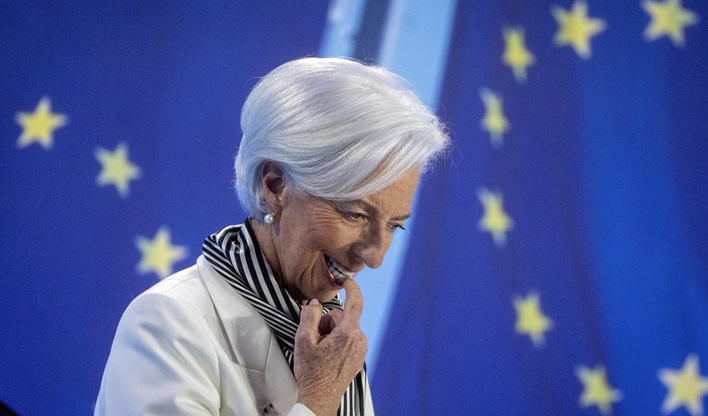
After the Bank of England’s first interest rate cut for more than four years, UK government debt prices rose and yields softened across the curve. This move was modest and expected because a rate cut has been anticipated for months after inflation returned to target in May.
What happens to rates next is harder to call, and this complicates the strategies of global bond managers who have to factor in events in the US, which has yet to cut rates, and the eurozone, where policymakers acted in June.
Based on overnight index swaps, the next UK rate cut is expected by financial markets in November, after the new government’s first fiscal event, the Autumn Budget on October 30. While central banks have got better at communicating their intentions in recent years, policymakers are reluctant to signal their plans in advance. “I’m not giving you any view on the path of rates to come,” BoE governor Andrew Bailey said on August 1. In figuring out the next move for rates, bond managers have not only to translate the messaging from central banks but also compare these with financial market expectations, which change daily. Occasionally these are at odds with each other.
UK managers from Morningstar rated funds reacted differently to the Bank's move, especially whether this represents a "one and done" cut or if the BoE needs to move more swiftly to help the real economy.
How Do Bonds React to Falling Rates?
Interest rates in the US, Europe and UK are expected by financial markets to fall further this year and in 2025, but the timing and extent of the cuts are unclear. This easing of monetary policy has been delayed in 2024 by more persistent inflation, but is still seen as an inevitable process.
UK government bond yields, as across the world, have reacted in advance to expected changes in monetary policy. So, for example, the 2-year gilt now yields around 3.60%, whereas a year ago the short-term UK government debt offered a yield of 5%.
Last year’s yield is more attractive of course but the bond’s price moves inversely to the yield. Bond investors achieve total returns through yield and capital appreciation – so a series of rate cuts would push up bond prices, while weakening yields. Some investors need the income, but others want income and growth so are happy to sacrifice some yield. Real yield is an important consideration here too - when inflation was at 10%, a bond yielding 5% was superficially appealing but didn’t beat inflation. Now UK inflation is 2% and the benchmark 10-year gilt offers nearly 4%.
Much depends on when investors buy the bond, the price they pay and rates/inflation expectations at the time, as well as whether they hold the security to maturity. What remains “fixed” over the life of the bond is the coupon.
What Do Bond Managers Think?
Since rates were cranked up, cash and money market funds have started to offer attractive yields of around 4% or 5%. They were seen as viable alternatives to bonds because they offered similar income, but without the complexity of owning fixed income. Cash deposits are the ultimate “safe” investment and offer greater capital protection than bonds – what they can’t offer is capital gains.
“In the period of low/rising bond yields and high deposit rates, this made perfect sense. Now, as we enter the next phase of the interest rate cycle, this is no longer the case,” says Colin Finlayson, manager of the Gold-rated Aegon Absolute Return Bond Fund and Strategic Bond Fund.
He argues that the market is now at an inflection point and investors could now switch out of cash and cash-like instruments and back into bonds.
“Central banks are now set to cut interest rates and deposit rates, in turn, are set to decline,” he says in emailed comments.
“At the same time, bond yields are at attractive levels again, offering the opportunity for both income and capital appreciation.”
While mortgage holders may want the Bank to cut rates again quickly to make their debt cheaper, bond investors may have mixed feelings. Despite the growing pressure on the Bank of England to cut rates, August’s cut may actually have been a mistake, argues Neil Mehta, who is a portfolio manager on the BlueBay Investment Grade Euro Aggregate Bond fund, which has a Morningstar Medalist Rating of Silver. There was no “strong imperative or necessity” to cut rates now, he says in an email.
“The five MPC members who voted for a cut may have acted too hastily, cutting for the sake of cutting, without the data to support the decision.”
Will There Be More UK Rate Cuts?
Mehta argues that the latest policy move may be “one and done”, and that the Bank’s scope for more cuts this year are more limited than markets are currently pricing in. The European Central Bank could have set a precedent here – the ECB signalled in advance that it would cut in June, but has since been more cautious about the timing of the next cut. September is seen as the most likely date, although recent inflation data has been stronger than expected. UK inflation is also expected to rise again towards the end of the year, before falling again, which supports further easing of monetary policy.
Sandra Rhouma, European Economist at AllianceBernstein, expects the Bank to cut aggressively in 2025 and 2026 to a "neutral rate" close to 3%. She expects four interest cuts in 2025, which is ahead of current market pricing.
BoE Should Cut Faster
Harry Richards, a fixed income manager of Jupiter Strategic Bond, another Silver-rated fund, urges the Bank to get on with cutting rates faster to spare the economy, which has had to adjust to a rapid tightening in monetary policy since 2021, since when rates have gone from 0.1% to 5.25%. Higher rates make borrowing more expensive for companies and consumers. Critics of the Bank argue that this has slowed down an economy that has only tentatively escaped from recession.
The BoE should loosen policy “much more aggressively” into 2025 “to avoid doing irreparable harm” to the economy and the labour market in particular.
On the other hand, he thinks the new Labour government brings a new air of political stability to the UK, attracting overseas buyers into UK fixed income.
What might this mean for gilts? As in the scenario posited by Aegon’s Finlayson of rotation out of cash and money markets to bonds, flows into UK bonds because of the improved political situation could increase prices and depress yields. Rate cuts will have the same effect. More buyers of fixed-income instruments push up prices – and this mechanism is explained in a recent article, “Want to Buy Government Bonds? Be Careful”. The opposite effect was seen in the eurozone debt crisis more than 10 years ago: Investors sold out of debt issued by indebted countries like Greece, which crashed prices but turbocharged yields.
What the Fed Does Next
Bond investors in the UK may have seen August 1’s decision by the Bank as firing the starting gun on a round of rate cuts, but the picture is more nuanced. For global bond managers, much depends on what the Federal Reserve does next. Currently US and UK interest rates are similar, 5% and above, and their bonds have similar yields too. Eurozone debt yields are lower and so is the main interest rate at 3.75%.
While cutting after the BoE, the Fed could still cut more over the next year or so. Morningstar’s chief economist Preston Caldwell expects US rates to be around 2% by the end of 2026, whereas UK rates are expected to be around 4% then. That would shift the argument for owning US debt over UK and eurozone debt. Aegon's Finlayson says this makes it more important to manage "duration risk", which is the sensitivity of bonds to interest rate changes. The longer term the debt, the more exposed the bonds are to this risk.
Again, this is a complex situation with many moving parts, including politics, credit ratings, economic growth and inflation. Financial market narratives change all the time - "lower for longer", "higher for longer", "transitory" versus "sticky" inflation - and the fixed income space is no exception.



























